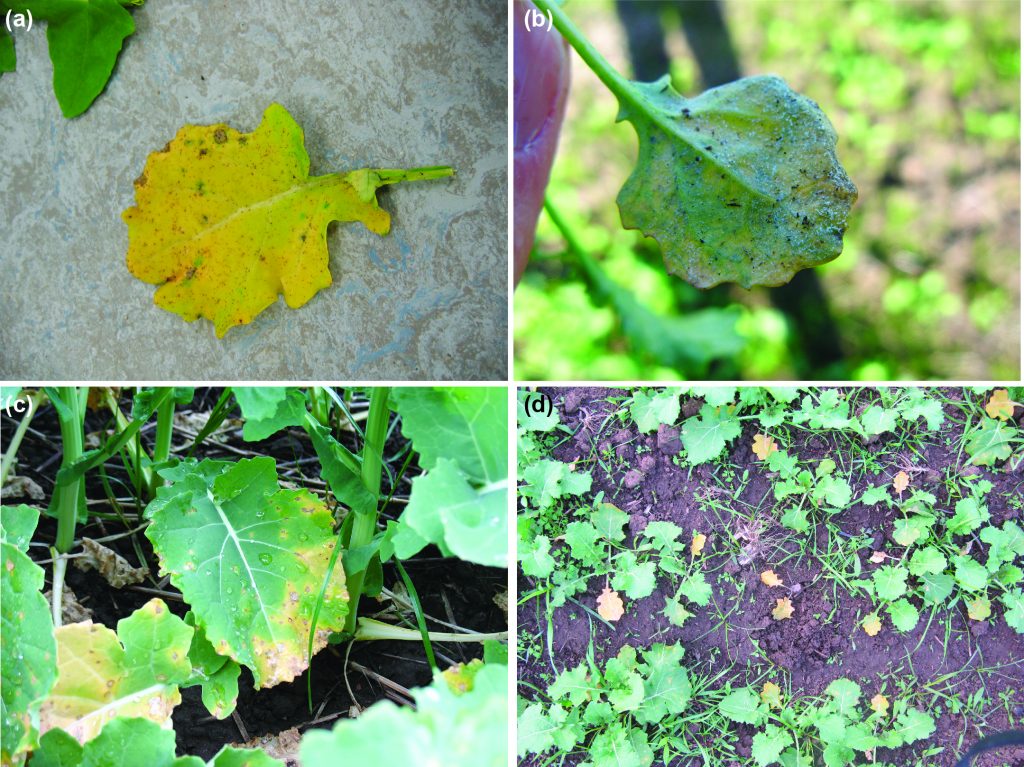Downy mildew is a common disease of canola throughout the world and is caused by the fungus Peronospora parasitica. Infection occurs under cool moist conditions where leaves or cotyledons are in contact with the soil or other leaves. Although seedlings can be severely attacked by the disease, significant yield loss does not usually occur. Downy mildew is rarely found beyond the rosette stage and crops normally grow away from it with the onset of warmer weather.
What to look for
Chlorotic or yellow areas on the upper leaf surface are the first symptoms to occur. These can be seen on young seedlings when cotyledons or first true leaves are present. A white mealy fungal growth can be seen on the underside of the leaf beneath these spots. Infected cotyledons tend to die prematurely. As the disease develops, individual spots join to form large irregularly shaped blotches. These necrotic lesions may cause a large part of the leaf to dry out and the upper surface of the leaf to develop a yellow red colour.

Symptoms of downy mildew on canola. (a) Chlorotic yellow symptoms characteristic of downy mildew. (b) The underside of the lead with typical mealy white hyphal growth. (c) Early stages of downy mildew infection. (d) Mildly severe infection of a crop. Photos: S. Marcroft
Disease Cycle
The fungus is both soil and seed-borne and can persist in the soil for a long time. Infection is favoured by cool, wet weather and under ideal conditions, new infections can develop in as little as 3 to 4 days. The fungus is related to white rust with specialised spores (oospores) probably responsible for primary infections. Conidial spores produced on the underside of the infected leaf are then responsible for the secondary spread of the disease.
Management
- Downy mildew does not usually affect yield so control measures are not generally warranted unless plant densities are severely reduced on a regular basis.
- In areas where downy mildew is a severe problem, fungicides containing copper as the active ingredient are registered for use in Australia.
- Crop rotation and the control of cruciferous weeds between canola crops can reduce disease severity.
Please note: This book is also available on AppleBooks


